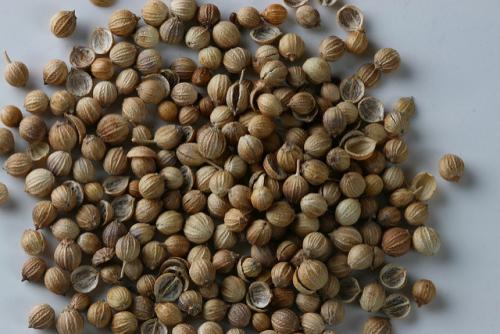
Coriander allergy symptoms are rare, but with increasing use of this spice hypersensitive people may experience few uncommon signs.
Dried seeds of cilantro or coriander plant are used to flavor seasonal dishes. I don’t expect a dish at my home without this distinct flavored spice. Am sure my mom have no idea about its benefits, she just adds for the flavor.
Nutrients in coriander can treat various health ailments including diabetes, Alzheimer’s disease, lung cavity cancer, conjunctivitis and reduce bad cholesterol.
However, in sensitive people when they ingest coriander seeds or leaves, immune system react adversely treating proteins in this spice as harmful and produces IgE antibodies. When the person inhale or consume coriander ingredient, antibodies signals to release histamine.
A chemical reaction triggers and hypersensitive person will experience different allergic symptoms.
Coriander Allergy Symptoms
Like any other food allergy, coriander allergic reaction range from mild to moderate symptoms. In rare cases, severe life threatening situations can be experienced.
Chemical reaction between histamine and foreign food substances results varied signs.
- If it affects respiratory system following symptoms can be seen sneezing, wheezing and trouble in breathing.
- Digestive system issues include nausea, vomiting, diarrhea, constipation or abdominal pain.
- Tingling sensation of tongue, mouth & lips, itchy eyes, nasal congestion or runny nose.
- Severe reaction includes sudden drop or increase in pulse rate, dizziness and trouble in breathing.
People who aren’t allergic to coriander may experience uncommon symptoms because of cross reactivity. Coriander plant is related to birch tree, so if you’re sensitive to birch pollen then coriander seed or leaves may trigger allergic reaction.
Oral allergy syndrome or pollen-food allergy results in burning sensation on lips and may see swelling around mouth.
Diagnosis
One of the easiest ways to treat food allergy is to avoid them. To determine the allergy, you must get diagnosed. Allergist will conduct skin prick test to confirm the allergen.
Once the allergic food is determined, along with oral and topical medication you must avoid that particular food substance.
Other dishes or food products include this spice for flavor, so check ingredient’s list to refrain its use. Some manufacturing companies don’t list the exact spice; instead they mention a broad name, its recommend to ask them about the different ingredients used.
Severe reaction is very rare and it needs immediate medical attention. Acute reaction can be reduced by antihistamine medication prescribed by physician.

